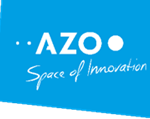Holger Sdunnus
Summary
G-Wale is a GALILEO-based system that enables enhanced forecasting of river floods and calibration of river models. Based on data provided by a network of water-borne GALILEO receivers deployed in a river, G-WaLe generates the water level profile of a given river sector with high temporal and spatial resolution. Depending on the actual situation, this data is used to calibrate river models or assist crisis management.
Background
Flood catastrophes caused by rivers are a recurrent threat throughout Europe and the rest of the world. According to UNESCO, more than 2,200 water-related disasters occurred worldwide between 1990 and 2001. River floods accounted for half of these disasters. Flooding affects about 520 million people and their livelihoods annually and claims about 25,000 lives worldwide every year. Flooding is a problem that affects both highly developed countries and emerging countries. In view of climate changes it is expected that both the frequency and intensity of flooding events may even grow, further increasing the potential of economic and social damage along the highly populated and highly developed riverbanks. Reliable models are needed to support the design of flood protection systems and to enable the responsible authorities and task forces to issue early warnings in case of floods.
Technical Solution
A G-WaLe system consists of several (<100) self-contained, football-sized, buoy-like floaters with integrated Galileo receivers, communication and energy supply units. The floaters are carried to their operational area by mobile vehicles such as cars, ships or helicopters and deployed into water. After being deployed into the river, G-WaLe floaters remain (“anchor”) at a more-or-less fixed position while constantly receiving the Galileo signals. The vertical component of the Galileo measurement provides information on the river water level at each floater position. All floaters transmit their positions to a central reference unit, whose position is exactly known. This data provides the water level profile – e.g. a potential flood wave – in a given sector of the river. The data received by the reference station is collected, filtered and processed before being transmitted to a central data management centre. Depending on the actual situation, the data is then used to calibrate river models or to support crisis management.
Advantages
The system is available on very short notice in the event of emergency. Because of its mobility, the system can be used in remote areas (e.g. mountains) as well as in countries providing only small or no infrastructure. It is useable both for crises management and for regular water level data acquisition to enhance river models. G-WaLe provides data of a yet unknown temporal and spatial resolution. The system is cost efficient.
Contact:
etamax space GmbH
Holger Sdunnus
Richard-Wagner-Str. 1
D-38106 Braunschweig
+49 (0)531 3802 422
h.sdunnus@etamax.de
www.etamax.de






